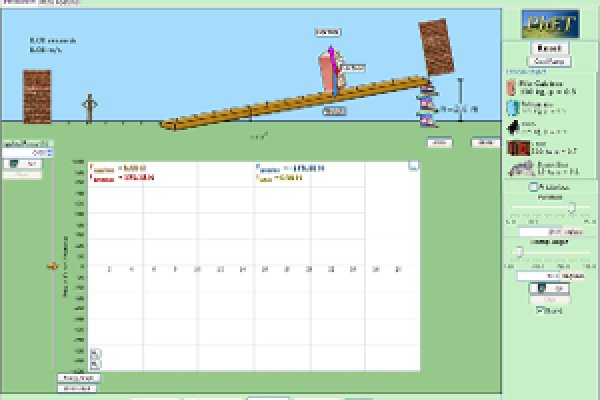Kraken 2krn es

Toggle navigation ПоискПоследние запросыПравовая информацияДобавить кракен взакладкиПоискИзображенияВидео4.4 343 omg73jwjikvxij.onionУправление проектом7 дек 2016... Рабочее зеркало omg для браузеров без Torсоединения http://omgruzxpnew4af.onion.ru.net/http://omg4jpwhfx4mst.onion.ru.net/http://omg7lpipoe4q2d.onion.ru.net/http://omg2exghh3rnmc.onion.ru.net/http://omg3rudf3j4hww.onion.ru.net/http://omg73jwjikvxij.onion.ru.net/ · Вопросы ... spark.ruomg Onion — криптомаркет kraken в TOR сетиhttp://omg5etioavaz7p.onion/. http://omg6c2bnrd6phf.onion/.http://omg7lpipoe4q2d.onion/. + новое зеркало.http://omg73jwjikvxij.onion/. Кто не вкуривает Для входа на кракен сайтырасположенные в доменной зоне.onion требуется TOR браузер:скачатьTOR Browser с официального сайта www.torproject.org ... zefir.siteTelegram: Contact @omgoniondeepОфициальный канал omg Контент сюда @omg_post_bot. Зеркалаomgruzxpnew4af.onion omg4jpwhfx4mst.onionomg2exghh3rnmc.onion omg3rudf3j4hww.onionomg5etioavaz7p.onion omg6c2bnrd6phf.onionomg7lpipoe4q2d.onion omg73jwjikvxij.onion. View Channel. If youhave Telegram, you can ... t.meomg onion | Всё о Tor - параллельном интернетеhttp://omg73jwjikvxij.onion/ · https://omg0118.com/ —Рабочее зеркало для браузеров без Tor соеденения. omg Corp.открыла свой канал в Telegram, подписывайтесьhttps://t.me/omgoniondeep. Внимание! Существует кучамошеннических площадок сделанных на домене onion.cab onion.laonion.nz итд, ... ruonion.comWoodyfromomg - форум LegalRC6 ч. назад... Woodyfromomg is a member of Форум LegalRC -открывается браузером TOR*. Пользователь. legalrc.comСсылка на гидру | Хотите зайти в магазин omg?omg onion — криптомаркет нового поколения, работает наогромной территории всего бывшего Союза, на данный момент плотно«заселены» продавцами все районы Российской Федерации... onion.hkСсылка на omg | omg - ссылки, обход, подключение имного...omg onion — Анонимный магазин ПАВ и запрещенных веществ. ОМГэто новое поколение продажи наркотических веществ в интернете. omgruzxpnew4afonion.comomg Market: Darknet URL.Onion Link Deep Web Addres...This darknet market focuses on recreational drugs or narcoticsubstances. omg market link URL darknetmarkets.cohttp://omg73jwjikvxij.onion/orders/5011290/image/4021698http://omg73jwjikvxij.onion/orders/5011290/image/4021698. pastebin.comomg Onion — криптомаркет в TOR сети | ZΞFIR - TechnologyNewsomg Onion — крупнейшая даркнет площадка в сети Tor Onion,криптомаркет нового поколения, работает на огромной территориистран всего бывшего Союза... zefir.siteРейтинг популярных onion ссылок с проверкой состояния...Больше никаких мертвых onion сервисов! Чтобы проголосовать затот или иной ресурс авторизуйтесь с помощью любой соц. сети. torify.meTelegram-канал omgoniondeep - omg: Здоровье и спорт...Каталог телеграмм-каналов tgchannels: telegram-каналomgoniondeep omg, все посты в tgchannels.comhttp://omgruzxpnew4af.onion/ - Форумomgruzxpnew4af.onion/ ОМГ. В начало. Назад. rottenswamp.ruDDOS-GUARDIf you are trying to visit this site, please try again later. Ifyou are a target website owner please make sure that: - DNS Arecord points to the protected IP address for the requested website- The DDoS... omgruzxpnew4af.onion.bioomg onion | Всё о Tor - параллельном интернетеomg onion - криптомаркет нового поколения, работает наогромной территории всего бывшего Союза, на данный момент плотно"заселены" продавцами все районы. ruonion.comПохожие запросы:onionсайты русские
onionсайты
onion сайты трах
onionmarket 1344 orders 640810
onionmarket 1344 orders 6408106
onionmarket 1344 orders 6400810
omgruzxpnew4af.onion
omgruzxpnew4af.onion
omg3rudf3j4hww.onion
onion сайты секс
Сегодня искали:zippyshare+star+sessions
one.bottompics.w.skve.org/php_test.php?a[]=<a+href=https://siwonhe.com/>로미로미+방문후기</a><meta+http-equiv=refresh+content=0;url=https://siwonhe.com/+/>
терлецкий
site-3680017-8046-4680.mystrikingly.com
sengaoshiqman qismlar
Kraken 2krn es - Кракен даркнет зеркало
А если выяснится, что они из РФ, тем более указал специалист. Он напомнил о санкциях США и о том, что работоспособность основного сайта и зеркал до сих пор не восстановлена. Через два часа после блокировки пользователь с ником Hydra support емко написал: «Не переживайте, восстановим». Кто пытался там что купить?? Министерство юстиции США 5 апреля опубликовало результаты расследования о работе даркнет-гипермаркета Hydra, где торговали наркотиками, оружием и поддельными документами, отмывали деньги и далее по темному списку. Также против площадки были введены санкции со стороны Министерства финансов США. Smith1987 новореги! Также были конфискованы биткоины на сумму, эквивалентную примерно 23 миллионам евро заявили сами силовики. Тем более там наверняка были некие копии серверов. Через нее продавали наркотические вещества, ценные бумаги, оружие, отмывали средства в криптовалютах и так далее. Многие пользователи на даркнет-форумах предполагают, что на самом деле немецкая полиция смогла лишь арестовать серверы, которые оказались зашифрованными, из-за чего получить доступ к их содержимому не удалось. ) кыш болезные Siamka новореги! Почему сразу наркоманов. "По предварительным данным, с ноября 2015 года Павлов управлял компанией ООО "Промсервис также известной как хостинговая компания "Полный привод "Все колеса" и, которая администрировала серверы "Гидры". Гидра - ФСЁ! Вы используете устаревший браузер. Этот и другие сайты могут отображаться в нём некорректно. (.) Но нужно время». Таким образом, регуляторы и силовые структуры разных стран продолжают усиливать давление на площадки, где совершаются незаконные операции с криптовалютами и другими активами. 10/4/22 Анонимно написал(а шо за сборище наркоманов в теме? «Вернее, есть но власти как ЕС, так и США заняты другим, по понятным причинам. Указанный как контактный номер телефона "Промсервиса" на момент подготовки публикации не отвечал. «Основная сложность в закрытии этой площадки заключалась в том, что преступник в интернете оказался более продвинутым, нежели силовики, поэтому маркетплейсу удалось так долго существовать сказал основатель компании Liveinternet и MediaMetrics Герман Клименко. В то же время он отметил, что юридических преград, чтобы создатели проекта смогли «всплыть» где-то в другом месте и продолжить свою деятельность, сейчас нет. Onion Рабочая?!?! «Центральное управление по борьбе с киберпреступностью прокуратуры Франкфурта-на-Майне и Федеральное управление уголовной полиции Германии отключили расположенную на территории страны серверную инфраструктуру крупнейшего в мире нелегального даркнет-рынка "Гидра". Гидра будет работать? При этом Павлов, возможно, получал комиссионные на миллионы долларов от незаконных продаж, проводимых через сайт". В русской версии площадки был создан специальный миксер для переводов в Биткойнах, что затрудняло слежение незаконных операций. ( Джордж Карлин ) interpol Профессионал Продавцы Private Club Старожил interpol Профессионал Продавцы Private Club Старожил 10/4/22 Чё всё, в категорию людей чтоль попытаетесь перейти теперь? CultSkaro Интересующийся проверенный продавец Private Club CultSkaro Интересующийся проверенный продавец Private Club 10/4/22 Блин, надо было тему свою назвать прост. Спасибо дорогая! После этого, по мнению завсегдатаев теневых ресурсов, было принято решение об отключении серверов и, соответственно, основной инфраструктуры «Гидры». 10/4/22 Да нет ничего нормального кроме гидры, знали бы давно все. Он также заверил, что после восстановления работы нелегального маркетплейса баланс каждого пользователя будет таким же, каким он был до блокировки.

Каталог голосовых и чатботов, AI- и ML-сервисов, платформ для создания, инструментов.возврата средств /фальш/ дейтинг и все что запрещено Законами Украины. Кардинг / Хаккинг Кардинг / Хаккинг wwhclublci77vnbi. Для более релевантной системы входа основные пользователи рекомендуют использовать при регистрации только данные введенные впервые. В этом способе есть одни минус, который кому- то возможно покажется пустяком, а кому-то будет сильно мешать. Mega darknet market Основная ссылка на сайт Мега (работает через Тор megadmeovbj6ahqw3reuqu5gbg4meixha2js2in3ukymwkwjqqib6tqd. Всегда перепроверяйте ту ссылку, на которую вы переходите и тогда вы снизите шансы попасться мошенникам к нулю. Ещё есть режим приватных чат-комнат, для входа надо переслать ссылку собеседникам. Отдельной строкой стоит упомянуть и сервис Vemeo, который, как и TunnelBear, присутствует на всех основных платформах, однако стоит 3,95 доллара в месяц, так что его трудно рекомендовать для любительского использования. Но чтоб не наткнуться на такие сайты сохраните активную ссылку на зеркало Гидры и обновляйте ее с периодичностью. Пароль. Источник p?titleRussian_Anonymous_Marketplace oldid. Спасибо! Эти сайты находятся в специальной псевдодоменной зоне.onion (внимательно смотри на адрес). Onion - Bitcoin Blender очередной биткоин-миксер, который перетасует ваши битки и никто не узнает, кто же отправил их вам. Является зеркалом сайта fo в скрытой сети, проверен временем и bitcoin-сообществом. Html верстка и анализ содержания сайта. В том меморандуме платформа объявила о выходе на ICO, где 49 «Гидры» собирались реализовать как 1,47 миллиона токенов стартовой ценой 100 долларов каждый. Зеркало сайта z pekarmarkfovqvlm. Обратите внимание, года будет выпущен новый клиент Tor. Onion - форум подлодка, всё о спутниковом телевидении. Вместо курьера вы получите адрес и описание места где забрать заказ. Хотя к твоим услугам всегда всевозможные словари и онлайн-переводчики. Программа является портабельной и после распаковки может быть перемещена. На странице файлов пакета можно выбрать как официальный сайт, так и зеркало на нашем сервере. Ремикс или оригинал? Данные приводились Flashpoint и Chainalysis. Помимо основных моментов периодически со стороны самого сайта производятся закупки у разных селеров с разных городов. Bpo4ybbs2apk4sk4.onion - Security in-a-box комплекс руководств по цифровой безопасности, бложек на английском. На этом сайте найдено 0 предупреждения. Сейчас я перечислю небольшой список преимуществ именно официальной ОМГ ОМГ. Onion - Lelantos секурный и платный email сервис с поддержкой SMTorP tt3j2x4k5ycaa5zt. Присутствует доставка по миру и перечисленным странам. Также обещают исправить Qiwi, Юмани, Web Money, Pay Pal. Мета Содержание content-type text/html;charsetUTF-8 generator 22 charset UTF-8 Похожие сайты Эти веб-сайты относятся к одной или нескольким категориям, близким по тематике. Onion - Ящик, сервис обмена сообщениями. При этом на полной скорости машина может разгоняться до 350 километров в час. Ч Архив имиджборд. Мегастрой. Какой же функционал нам представляет Matanga? Whisper4ljgxh43p.onion - Whispernote Одноразовые записки с шифрованием, есть возможность прицепить картинки, ставить пароль и количество вскрытий записки. Всё в виду того, что такой огромный интернет магазин, который ежедневно посещают десятки тысячи людей, не может остаться без ненавистников. Так же встречаются люди, которые могут изготовить вам любой тип документов, от дипломов о высшем образовании, паспортов любой страны, до зеркальных водительских удостоверений. Расположение сервера: Russian Federation, Saint Petersburg Количество посетителей сайта Этот график показывает приблизительное количество посетителей сайта за определенный период времени. Редакция: внимание! Onion/ - форум FreeHacks Ссылка удалена по притензии роскомнадзора Ссылка удалена по притензии роскомнадзора Сообщения, Анонимные Ящики (коммуникации) Сообщения, анонимные ящики (коммуникации) bah37war75xzkpla. Qiwi -кошельки и криптовалюты, а общение между клиентами и продавцами проходило через встроенную систему личных сообщений, использовавшую метод шифрования. Список ссылок обновляется раз в 24 часа.